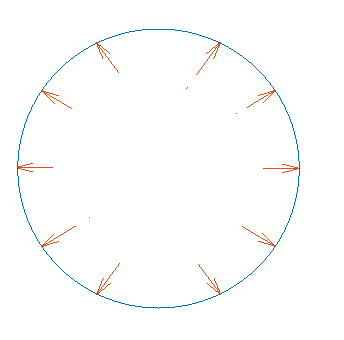From what I understand, there can be no $E$-field inside a conductor in an electrostatic situation, because had there been any field within it, the charges on the surface would start to move, thus exiting the equilibrium state. In other words, the $E$-field must have no component along the equipotential surface.
But then, just under the inside surface of the conductor, what argument would prevent the $E$-field from existing under this form (the conductor is a hollow negatively charge sphere):
If ones takes a gaussian sphere with a slightly smaller radius, they could argue that the field cannot exist since there is no charge enclosed inside the surface.
In this case I might as well decide to choose another gaussian surface that contain charges inside of it to justify the existence of the field:


